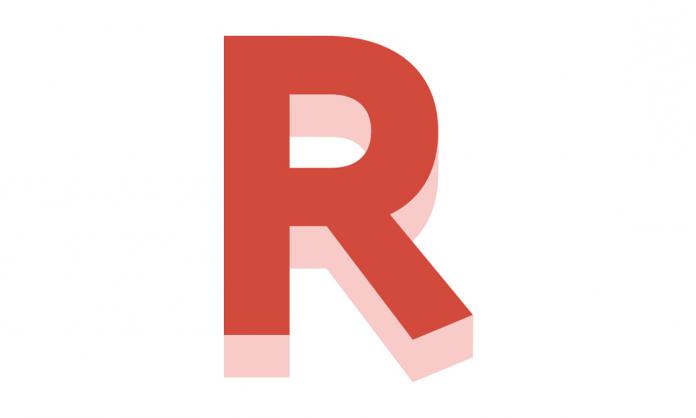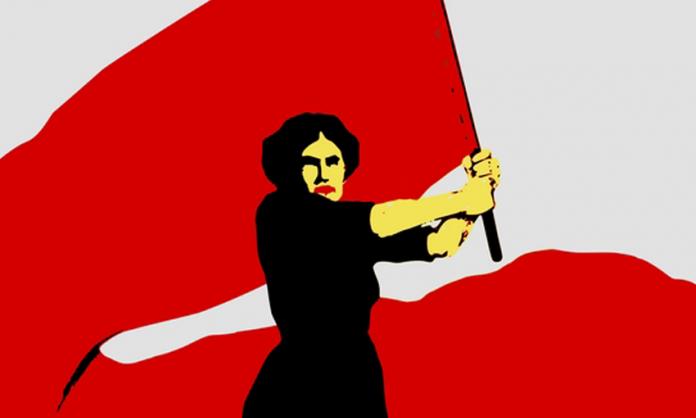In April 1925, Aboriginal activist Fred Maynard stood before a packed meeting at St David’s Hall in Sydney’s Surry Hills. Looking out at the more than 200 Aboriginal men, women and children who filled the room, he opened, “Brothers and sisters, we have much business to transact so let’s get right down to it”.
Thus began the first conference of the Australian Aboriginal Progressive Association, a trailblazing activist organisation.
“The political platform they established 100 years ago is still the same platform we are fighting for today: genuine land rights, genuine self-determination ... Aboriginal people in charge of Aboriginal affairs”, John Maynard, grandson and biographer of Fred, and a historian at the University of Newcastle, tells Red Flag.
The manifesto of the Progressive Association, which was distributed across the east coast of Australia, included demands for a national land rights agenda, an end to the stealing of Aboriginal children from their families and for all of the Protection Boards (bodies that gave state governments much control over Aboriginal people’s lives) to be abolished, among other things.
Unlike the Aboriginal activist organisations of the 1930s, the Progressive Association did not simply advocate for an end to discriminatory laws. It also argued for cultural independence and the right of Aboriginal families to plots of land (due to their ownership prior to invasion), and rejected the idea that Aboriginal culture was inferior. Fred Maynard wrote in a 1927 letter to New South Wales Premier Jack Lang:
“I wish to make it perfectly clear, on behalf of our people, that we accept no condition of inferiority as compared with the European people. Two distinct civilisations are represented by respective races. On one hand we have the civilisation of necessity and on the other the civilisation co-incident with courteous supply of all the requirements of the human race. That the European people by the arts of war destroyed our more ancient civilisation is freely admitted, and that by their vices and diseases our people have been decimated is also patent, but neither of these facts are evidence of superiority. Quite the contrary is the case.”
Maynard’s letter went on to explain that Aboriginal people “accepted the modern system of government”, but this did not mean the Progressive Association had any intention of abandoning either Aboriginal culture or a distinct Aboriginal identity.
The bold and radical ideas of the Progressive Association didn’t come out of nowhere. Much as Aboriginal activism in the 1960s and 1970s was influenced by the civil rights movement and Black Power in the US and the anti-colonial struggles of the time, the Progressive Association of the 1920s was also impacted by international struggles against racism.
Fred came into contact with these while working on the waterfront in Sydney in the early twentieth century. There he joined the Coloured Progressive Association, a group of Black nationalist African American, West Indian and African sailors. The Coloured Progressive Association was a part of a worldwide movement centred on the charismatic leader Marcus Garvey, a Jamaican based in Harlem, New York, and his Universal Negro Improvement Association (UNIA), which had branches across the globe.
“On the docks, they were coming into contact with these Black sailors, carrying newspapers and manifestos and conversations”, John explains. “At that point, my grandfather realised that the racism, prejudice and oppression facing Aboriginal people wasn’t just localised—it was a bloody global issue.”
By the early 1920s, the Coloured Progressive Association was succeeded by UNIA Branch 646 based in Sydney. Tom Lacey, another Aboriginal dockworker and future treasurer of the Australian Aboriginal Progressive Association, was elected as its Sydney organiser. Marcus Garvey’s popular newspaper Negro World regularly featured stories about Aboriginal people in Australia, most likely written by Lacey and other members of the Sydney branch.
Their involvement in the Garvey movement strongly influenced these emerging Aboriginal activists. “When you look at Garvey’s movement, it was all about Black unity ... it was about social, economic and political freedom and for Black people to mobilise together globally around these issues”, John continues. “This resonated strongly with my grandfather and many of these early Aboriginal activists that they needed to do something similar here.”
The international Black nationalist movement fragmented after Garvey was imprisoned in 1923; the Aboriginal Progressive Association was formed the following year to continue the struggle in Australia. Maynard brought together a core team of firebrand Aboriginal leaders including Tom Lacey, Dick Johnson (a returned solider from the western front in Europe), Sid Ridgeway (a close friend who had worked at the Chullora Railway Workshops, a left-wing trade union stronghold), and two remarkable Aboriginal women activists: Jane Duren and Cora Robertson.
Black nationalism wasn’t the only influence on Fred during his time on the Sydney waterfront. He joined the Waterside Workers’ Federation and became familiar with the principles of the trade union movement. Throughout his life, Maynard would often make appeals to white workers on the basis of this understanding. For instance, in the 1927 letter to Lang, he also wrote:
“The members [of the Progressive Association] have also noted the strenuous efforts of the Trade Union leaders to attain the conditions which existed in our country at the time of invasion by Europeans—the men only worked when necessary—we called no man ‘Master’ and we had no king.”
The future leaders of the Progressive Association, then, were steeped in the politics of trade unionism and the international anti-racist struggle.
Despite the prominence and radicalism of the group and its members, the detailed history remained buried for a long time. John Maynard has done more than anyone to unearth it.
“Like a lot of Aboriginal people of my generation, I left school when I was 15”, he says. “I came through a school system in the ’50s and ’60s, and we weren’t in it as far as history was concerned, except for as a Stone Age people who were a dying race.” John started his research into Maynard and the Progressive Association when he was 40 and out of work. John’s father gave him “a kick up the arse to do something”, asking him to write a family history. At the time, John had “no idea about how vast the organisation was or the impact they made”.
His investigations led him to the Wollotuka Institute at the University of Newcastle, where he enrolled in a diploma course and began writing about the history of Fred Maynard and the activism of the 1920s. This eventually led to the 2007 publication of Fight for Liberty and Freedom: The origins of Australian Aboriginal activism.
An invaluable part of John Maynard’s research has been the revelation that hundreds of Aboriginal people were engaged in the work of the organisation. While the justly famous Day of Mourning and Protest in 1938 involved around 100 people, thirteen years earlier the Progressive Association had “spread across NSW like a brushfire”. Within six months, the group’s membership topped 600. The activists established thirteen branches, four sub-branches, and offices at Addison’s Hall.
Later in 1925, they held another conference, this time in Kempsey, on the north coast, which went for three days and attracted more than 700 Aboriginal people. Discussions were introduced by Aboriginal speakers and covered a range of topics including land rights, child removals, health, housing, education and political freedoms. Some of the talks were presented by senior Aboriginal people in traditional languages thought lost due to colonisation. There were two more conferences in 1927 and 1929, also attended by hundreds.
This was undoubtedly the largest number of Aboriginal people directly engaged in an activist organisation or movement until the formation of the Federal Council for the Advancement of Aborigines and Torres Strait Islanders in 1958. But even then, the council didn’t reach such numbers of active Aboriginal participants until the late 1960s.
The Progressive Association also garnered some important white allies, in particular the outspoken missionary Elizabeth McKenzie Hutton and the Newcastle-based newspaper editor J.J. Moloney, who regularly covered the activities of the Progressive Association in his press. John argues that their contribution was vital:
“I say this very strongly because these individuals need to be highlighted for their incredible courage. We are talking about a period one hundred years ago—there were very few people willing to stand up and support Aboriginal people or Aboriginal issues then.”
Unsurprisingly, the activities of the Progressive Association brought it into conflict with the authorities. “It was a bitter campaign and fight with the NSW Protection Board”, John says. “You’ve got to remember at that point in time the chairperson of the Protection Board was also the chair of the NSW Police. So there was a lot of police harassment of these early Aboriginal activists.”
The threats made against them and their families and the constant harassment took their toll. John notes that his grandfather’s work opportunities on the docks evaporated as the Protection Board’s campaign against him ramped up. John also recalls his own father explaining that, when the family lived in Lakemba, he and another Aboriginal kid were picked up off the street by the police to send a message to Fred that he should cease his activities.
The Progressive Association was still active publicly until 1929, but increasingly it was driven underground and became more of an informal network. The persecution was so intense that none of the key leaders of the 1920s were involved in the next generation of Aboriginal activism in the 1930s, and the organisation and its achievements rapidly disappeared from public discussion.
Nevertheless, John continues to find new evidence of its ongoing activities. For example, Fred spoke at a meeting of the Willoughby Labor League in 1929 to argue for Aboriginal representatives to parliament, some months after John previously thought the organisation had stopped operating. Oral histories testify to meetings of the leading members of the Progressive Association continuing in Fred’s kitchen into the early 1930s, shortly before a tragic workplace accident left him crippled for life.
Next year will be the 100th anniversary of the formation of the Progressive Association, and John has plans to re-release his biography of Fed Maynard in a new edition.
“This story really needs to be out there to inspire our young people, to show that we had heroes and heroines from the past brave enough to stand up and oppose the government and the authorities over the treatment of our people”, he says. “It’s also important because many of the issues dealt with by the Australian Aboriginal Progressive Association are still with us today: land rights, genuine self-determination [and] that Aboriginal people should be in charge of Aboriginal affairs.”











